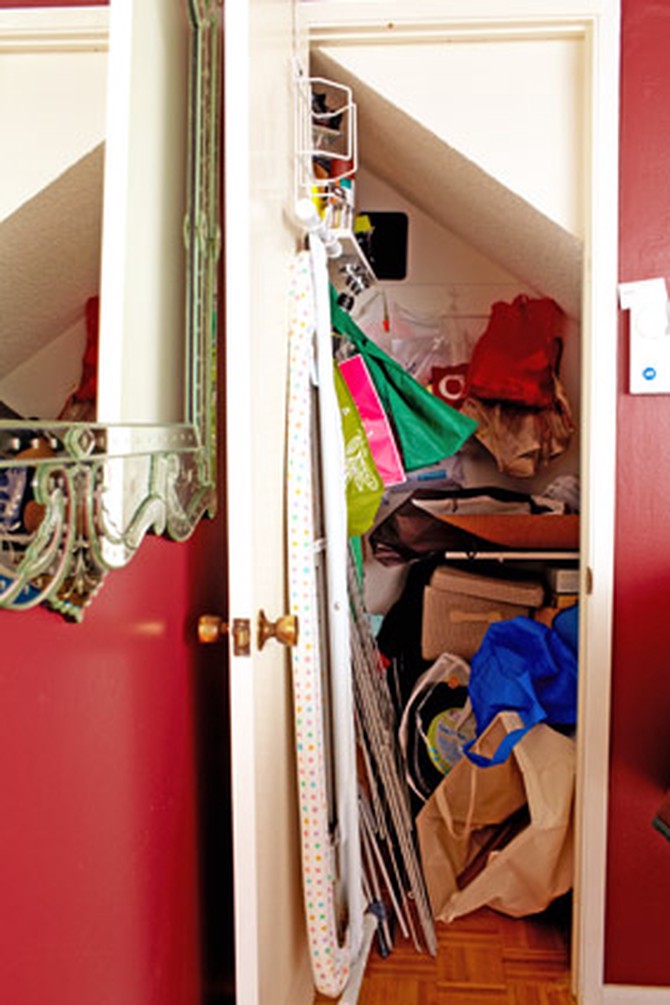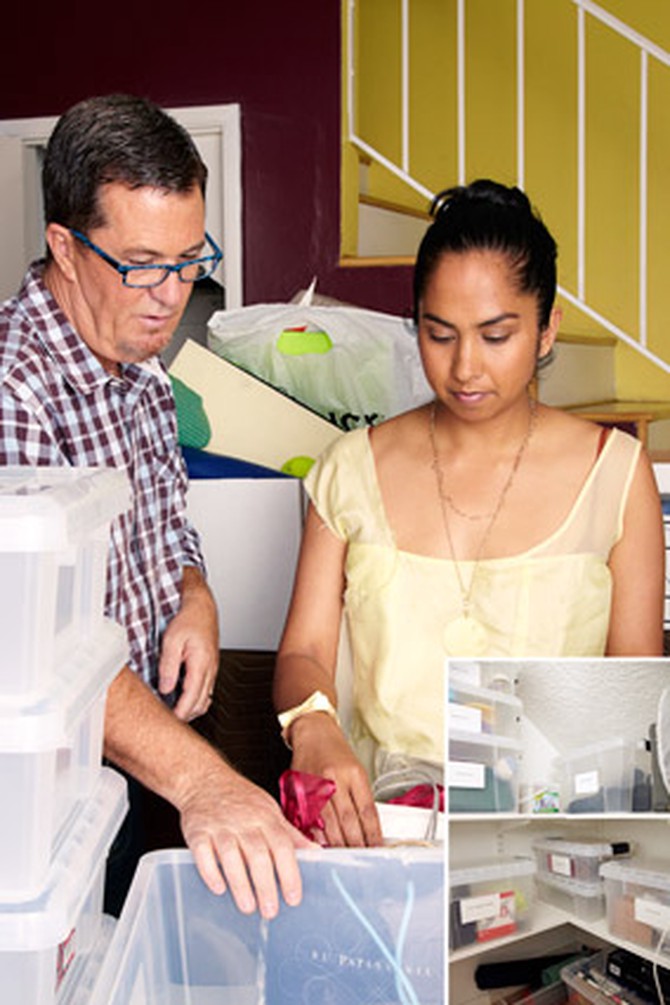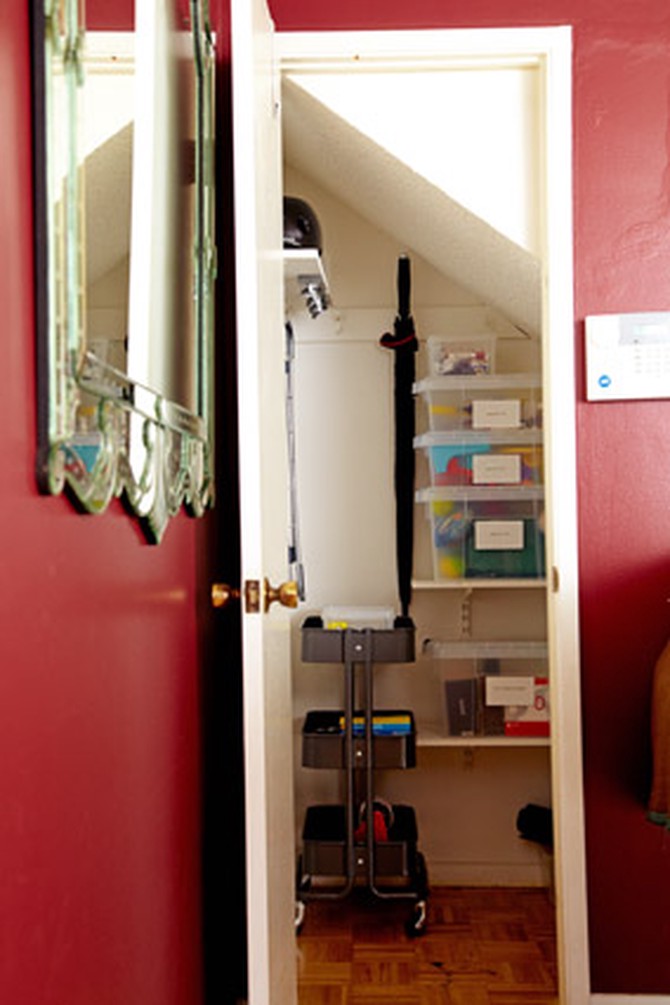Home Makeover: Refresh Your Under-the-Staircase Space

Photo: David Tsay
An awkwardly shaped closet stuffed to the gills with everything from tennis rackets to batteries.
The closet wedged behind the piano and under the staircase in Jeet Sohal's townhouse is small—but that's not the real problem. Its sloping, vaguely trapezoidal shape has plenty of volume but few right angles. It's hard to know what "goes" in a space like this. So Sohal and her husband, Eric, have just stuffed it with whatever they wanted to disappear, from their kids' Play-Doh and construction paper to yoga mats, umbrellas, lightbulbs, clothes needing ironing, reusable shopping bags, instruction manuals, Elmer's glue, a picnic set, work gloves, lint rollers, spray enamel, bed risers, and a vintage varsity jacket Sohal used to wear while riding on the back of Eric's motorcycle. A few years ago, Sohal installed shelves to try to organize the mess, but they've long since been buried by clutter.
The Fix
An organized storage space for often-used household items.

Photo: David Tsay
The Process
When Walsh and Sohal begin their purge, both seem dumbfounded by how much stuff she's managed to, well, stuff into this small lair. Sorting like items into large plastic bins, they create piles of kids' toys (Taboo, sidewalk chalk), home stuff (screwdrivers, batteries, the candles Sohal keeps on hand in case of an earthquake), sporting equipment (tennis balls, golf gloves), and baby gear (a car seat, a mosquito net covering for a bassinet). A bin labeled HUSBAND, meanwhile, fills with a running vest, a radar detector, and shoe polish. Next Walsh stacks several sizes of clear plastic bins on the newly excavated built-in shelves to gauge how much volume the closet can comfortably hold, since he is adamant that the floor remain clear. "Once you get floor creep, you've lost the battle," he says gravely.

Photo: David Tsay
Next: Peter Walsh makes over other weird spaces

